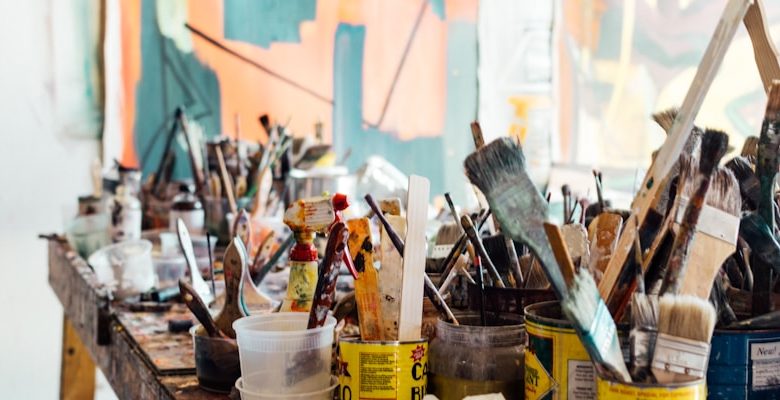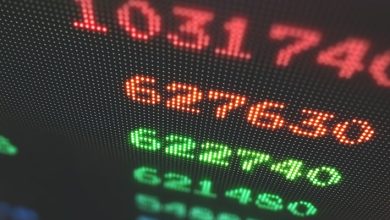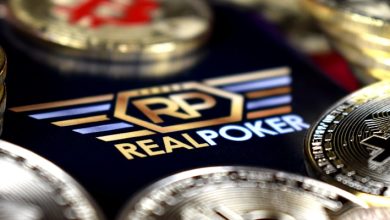The Role of NFTs in the Evolution of Digital Art

- Understanding the concept of NFTs in the art world
- Exploring the benefits of NFTs for digital artists
- Challenges and criticisms surrounding NFTs in digital art
- How NFTs are revolutionizing the way we buy and sell art online
- The impact of NFTs on the traditional art market
- Future trends and possibilities for NFTs in digital art
Understanding the concept of NFTs in the art world
NFTs, or non-fungible tokens, have been causing a stir in the art world recently as they revolutionize the way digital art is bought, sold, and collected. These digital tokens represent ownership of a unique piece of art using blockchain technology, providing a sense of authenticity and scarcity that was previously difficult to achieve in the digital realm.
One of the key concepts to understand about NFTs in the art world is the idea of provenance. Unlike physical art pieces, digital art can be easily replicated and shared online, leading to questions about the originality and ownership of a piece. NFTs solve this issue by creating a verifiable and secure record of ownership, ensuring that the artist and collector can prove the authenticity of the artwork.
Another important aspect of NFTs is the concept of royalties. When a digital artwork is sold as an NFT, the artist can embed a smart contract that automatically pays them a percentage of the resale value every time the artwork changes hands. This provides artists with a new source of income and incentivizes them to continue creating and sharing their work in the digital space.
Overall, NFTs are changing the art world by democratizing access to digital art, creating new revenue streams for artists, and fostering a sense of authenticity and ownership in a medium that has long struggled with these issues. As more artists and collectors embrace this technology, it is clear that NFTs will continue to play a significant role in the evolution of digital art.
Exploring the benefits of NFTs for digital artists
Digital artists are increasingly turning to Non-Fungible Tokens (NFTs) as a way to showcase and sell their artwork in the digital realm. NFTs offer unique benefits that traditional art marketplaces cannot match, making them an attractive option for artists looking to monetize their creations in a new and innovative way.
One of the key advantages of NFTs for digital artists is the ability to retain more control over their work. By minting an NFT, artists can establish ownership rights and set specific terms for how their art is bought, sold, and shared. This level of autonomy is empowering for artists who want to protect their intellectual property and ensure that they are fairly compensated for their efforts.
Additionally, NFTs provide a direct connection between artists and collectors, eliminating the need for intermediaries such as galleries or agents. This direct relationship not only allows artists to reach a global audience more easily but also enables them to receive a larger share of the profits from their sales. By cutting out the middlemen, digital artists can maximize their earnings and build a more sustainable career in the art world.
Furthermore, NFTs offer a new way for artists to engage with their fans and supporters. Through tokenized art, artists can create unique experiences, such as limited editions, unlockable content, or access to exclusive events. These added perks not only increase the value of the artwork but also foster a sense of community and loyalty among collectors, driving up demand for the artist’s work.
In conclusion, NFTs present a wealth of opportunities for digital artists to showcase their talent, protect their rights, and build a direct relationship with their audience. By leveraging the benefits of NFTs, artists can revolutionize the way they create and sell art in the digital age, opening up new possibilities for growth and success in the evolving art market.
Challenges and criticisms surrounding NFTs in digital art
One of the main challenges surrounding NFTs in the realm of digital art is the environmental impact. Critics argue that the process of minting NFTs consumes a significant amount of energy, contributing to the overall carbon footprint. This has sparked a debate within the art community about the sustainability of using blockchain technology for buying and selling digital artwork.
Another criticism of NFTs in digital art is the issue of copyright and ownership. Some artists have raised concerns about the potential for their work to be replicated and distributed without their consent once it has been tokenized as an NFT. This raises questions about how intellectual property rights can be protected in the digital landscape.
Additionally, there is a sense of exclusivity and elitism surrounding NFTs, with some arguing that they primarily benefit established artists and collectors with significant resources. This can create barriers for emerging artists who may not have the means to participate in the NFT market or gain recognition for their work.
How NFTs are revolutionizing the way we buy and sell art online
NFTs, or non-fungible tokens, have been making waves in the art world by revolutionizing the way we buy and sell art online. These digital tokens have enabled artists to tokenize their work, allowing for unique ownership of digital art pieces. This has opened up a whole new world of possibilities for artists, collectors, and art enthusiasts alike.
Unlike traditional art sales, where physical pieces are bought and sold, NFTs are digital assets that are stored on a blockchain. This means that the ownership and authenticity of a piece of digital art can be easily verified, providing a level of security and transparency that was previously impossible in the digital art world.
Furthermore, NFTs have created a new way for artists to monetize their work. By creating limited editions of their digital art pieces as NFTs, artists can sell directly to collectors without the need for intermediaries like galleries or auction houses. This has democratized the art market, making it more accessible to artists and collectors of all levels.
The impact of NFTs on the traditional art market
The emergence of Non-Fungible Tokens (NFTs) has had a significant impact on the traditional art market. NFTs are digital assets that represent ownership of unique items, such as digital art pieces. This new form of ownership has disrupted the way art is bought and sold, challenging the traditional intermediaries like galleries and auction houses.
One key way that NFTs have influenced the traditional art market is by providing artists with a new way to monetize their work. Through the use of smart contracts on blockchain technology, artists can now sell their digital art directly to collectors, bypassing the need for galleries or agents. This has opened up new opportunities for artists to reach a global audience and retain more control over their creative output.
Additionally, the transparency and security provided by blockchain technology have helped to alleviate some of the issues that have plagued the traditional art market, such as fraud and forgery. The immutability of blockchain ensures that each NFT is unique and cannot be replicated, providing collectors with greater confidence in the authenticity of the artworks they purchase.
Furthermore, the rise of NFTs has sparked a conversation about the value of digital art compared to traditional physical art. While some may argue that the intangible nature of digital art makes it less valuable, others see it as a new form of artistic expression that is just as valid as any other medium. This shift in perception has the potential to reshape the art market as a whole, blurring the lines between physical and digital art forms.
Overall, the impact of NFTs on the traditional art market is undeniable. As more artists and collectors embrace this new technology, the art world is undergoing a transformation that is sure to have lasting effects on how art is created, bought, and sold in the digital age.
Future trends and possibilities for NFTs in digital art
As NFTs continue to revolutionize the art world, the future trends and possibilities for NFTs in digital art are vast and exciting. Artists are exploring new ways to create and sell their digital art using blockchain technology, opening up a world of opportunities for both creators and collectors.
One of the key trends in NFT digital art is the use of interactive and dynamic pieces that evolve over time. Artists can now create digital artworks that change based on external factors such as the time of day or the weather, creating a unique and ever-changing viewing experience for collectors.
Additionally, the rise of virtual reality (VR) and augmented reality (AR) technologies is opening up new avenues for NFT digital art. Artists can now create immersive art experiences that allow collectors to step into the artwork itself, blurring the lines between the physical and digital worlds.
Another trend in the NFT digital art space is the use of fractionalized ownership. This allows multiple collectors to own a stake in a single artwork, making high-value pieces more accessible to a wider audience. It also opens up new possibilities for collaboration between artists and collectors.
Looking ahead, the possibilities for NFTs in digital art are truly limitless. As the technology continues to evolve and mature, we can expect to see even more innovative and groundbreaking uses of NFTs in the art world. From AI-generated artworks to virtual art galleries, the future of NFT digital art is sure to be an exciting journey.



